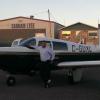Flying a rocket at gross weight
-
Members Online
- EricJ
- Deb
- kaba
- 201er
- PeytonM
- Matthew P
- alexz
- Stealth Mooney
- M20S Driver
- Paul Thomas
- Aaviationist
- A64Pilot
- Rwsavory
- Maint One mech
- exM20K
- EarthboundMisfit
- redbaron1982
- MaxwellSmart86
- christaylor302
- N201MKTurbo
- TCC
- Patrick Horan
- JoeFFG9
- Hank
- Fly Boomer
- BFF78
- MarquezJC
- Schllc
- Skates97
- Hoeschen
- ericrynehess
- Ollie Gark
- Rmnpilot


Recommended Posts
Join the conversation
You can post now and register later. If you have an account, sign in now to post with your account.